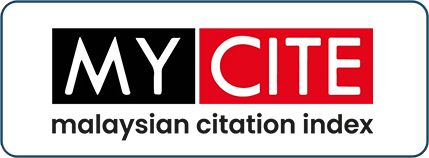Fourier Transform Infrared Spectroscopy as A Technique for Multivariate Analysis of Lard Adulteration in Food Products: A Review
DOI:
https://doi.org/10.33102/jfatwa.vol17no1.225Keywords:
FTIR spectroscopy, Multivariate, Lard, Adulterant, HalalAbstract
The presence of lard in food products is prohibited (haram) for Muslim and a few other religions i.e. Judaism and Hinduism. Due to the advantages of lard such as easily available, cheap and able to produce better quality of food products, the adulteration of food products with lard has become a serious issue. The complex composition of food products and similar properties of lard as an adulterant make identification of food adulterations a big challenge. Chemical analysis is one way to authenticate the halal status of the food products which is based on the specific markers present or absent in the products they contain. This article highlights on the use of Fourier transform infrared (FTIR) spectroscopy to determine the presence of lard combined with multivariate analysis. This technique also able to quantify the amount of lard in the food products that are claimed to be halal.
Downloads
References
Adhikari, P., Shin, J.A., Lee, J.H., Hu, J.N., Zhu, X.M., Akoh, C.C. and Lee, K.T. (2010). Production of Trans‐Free Margarine Stock by Enzymatic Interesterification of Rice Bran Oil, Palm Stearin and Coconut Oil. Journal of the Science of Food and Agriculture 90(4): 703-711.
Aida, A.A., Che Man, Y.B., Raha, A.R. and Son, R. (2007). Detection of Pig Derivatives in Food Products for Halal Authentication by Polymerase Chain Reaction–Restriction Fragment Length Polymorphism. Journal of the Science of Food and Agriculture 87(4): 569-572.
Aida, A.A., Che Man, Y.B., Wong, C.M.V.L., Raha, A.R. and Son, R. (2005). Analysis of Raw Meats and Fats of Pigs Using Polymerase Chain Reaction for Halal Authentication. Meat Science 69(1): 47-52.
Al-Jowder, O., Kemsley, E.K. and Wilson, R.H. (1997). Mid-Infrared Spectroscopy and Authenticity Problems in Selected Meats: A Feasibility Study. Food Chemistry 59(2): 195-201.
Al-Qaradawi, Y. (1995). The Lawful and the Prohibited in Islam. (Reviewed by Hammad A.Z.). Kuala Lumpur: Islamic Book Trust.
Che Man, Y.B., Abidin, S.Z. and Rohman, A. (2011b). Discriminant Analysis of Selected Edible Fats and Oils and Those in Biscuit Formulation Using FTIR Spectroscopy. Food Analytical Methods 4(3): 404-409.
Che Man, Y.B., Marina, A.M., Rohman, A., Al-Kahtani, H.A. and Norazura, O. (2014). A Fourier Transform Infrared Spectroscopy Method for Analysis of Palm Oil Adulterated with Lard in Pre-Fried French Fries. International Journal of Food Properties 17(2): 354-362.
Che Man, Y.B. and Mirghani, M.E.S. (2001). Detection of Lard Mixed with Body Fats of Chicken, Lamb, and Cow by Fourier Transform Infrared Spectroscopy. Journal of the American Oil Chemists' Society 78(7): 753-761.
Che Man, Y.B., Rohman, A. and Mansor, T.S.T. (2011a). Differentiation of Lard from Other Edible Fats and Oils by Means of Fourier Transform Infrared Spectroscopy and Chemometrics. Journal of the American Oil Chemists' Society 88(2): 187-192.
Che Man, Y.B., Syahariza, Z.A., Mirghani, M.E.S., Jinap, S. and Bakar, J. (2005). Analysis of Potential Lard Adulteration in Chocolate and Chocolate Products Using Fourier Transform Infrared Spectroscopy. Food Chemistry 90(4): 815-819.
Che Man, Y.B., Syahariza, Z.A. and Rohman, A. (2010). Fourier Transform Infrared (FTIR) Spectroscopy: Development, Techniques, and Application in the Analyses of Fats and Oils. In Fourier Transform Infrared Spectroscopy (Ed., O.J. Ress). New York: Nova Science. Pp. 1–26.
Chiavaro, E. (Ed.). (2014). Differential Scanning Calorimetry: Applications in Fat and Oil Technology. Boca Raton: CRC Press.
Cho, H.J., Kwon, G.T., Park, H., Song, H., Lee, K.W., Kim, J.I. and Park, J.H.Y. (2015). A High-Fat Diet Containing Lard Accelerates Prostate Cancer Progression and Reduces Survival Rate in Mice: Possible Contribution of Adipose Tissue-Derived Cytokines. Nutrients 7(4): 2539-2561.
Dahimi, O. (2013). Detection of Adulterated Non-Halal Fat (Lard) in Animal Fats Using GC-FID, HPLC, DSC and FTIR Spectroscopy Evaluated with Chemometrics Technique. Master Thesis, Universiti Sains Islam Malaysia.
Dahimi, O., Hassan, M.S., Rahim, A.A. and Abdulkarim, S.M. (2013). Differentiation of Lard from Other Edible Fats by Gas Chromatography-Flame Ionisation Detector (GC-FID) and Chemometrics. Journal of Food and Pharmaceutical Sciences 2(1): 27-31
Ding, Q.Z., Liu, L.L., Wu, Y.W., Li, B.N. and Ouyang, J. (2014). Authentication and Adulteration Analysis of Sesame Oil by FTIR Spectroscopy. Guang pu xue yu guang pu fen xi = Guang pu 34(10): 2690-2695.
Di Pietro, P.F., Medeiros, N.I., Vieira, F.G.K., Fausto, M.A. and Belló-Klein, A. (2007). Breast Cancer in Southern Brazil: Association with Past Dietary Intake. Nutrición Hospitalaria 22(5): 565-572.
Gallardo-Velázquez, T., Osorio-Revilla, G., Cárdenas-Bailón, F. and Beltrán-Orozco, M.C. (2008). Determination of Ternary Solutions Concentration in Liquid–Liquid Extraction by the Use of Attenuated Total Reflectance-Fourier Transform Infrared Spectroscopy and Multivariate Data Analysis. The Canadian Journal of Chemical Engineering 86: 77-83.
Gillies, M.T. (1974). Shortening, Margarine and Food Oils. New Jersey: Noyes Data Corporation. Pp. 65-133.
Guillen, M.D. and Cabo, N. (1997). Characterization of Edible Oils and Lard by Fourier Transform Infrared Spectroscopy. Relationships between Composition and Frequency of Concrete Bands in the Fingerprint Region. Journal of the American Oil Chemists' Society 74(10): 1281-1286.
Gunstone, F.D. (1996). Fatty Acid and Lipid Chemistry. Surrey: Chapman and Hall. Pp. 61-85.
Hashim, D.M., Che Man, Y.B., Norakasha, R., Shuhaimi, M., Salmah, Y. and Syahariza, Z.A. (2010). Potential Use of Fourier Transform Infrared Spectroscopy for Differentiation of Bovine and Porcine Gelatins. Food Chemistry 118(3): 856-860.
Hsu, S.Y. and Yu, S.H. (2002). Comparisons on 11 Plant Oil Fat Substitutes for Low-Fat Kung-Wans. Journal of Food Engineering 51(3): 215-220.
Indrasti, D., Che Man, Y.B., Mustafa, S. and Hashim, D.M. (2010). Lard Detection Based on Fatty Acids Profile Using Comprehensive Gas Chromatography Hyphenated with Time-of-Flight Mass Spectrometry. Food Chemistry 122(4): 1273-1277.
Jaswir, I., Mirghani, M.E.S., Hassan, T.H. and Said, M.Z.M. (2003). Determination of Lard in Mixture of Body Fats of Mutton and Cow by Fourier Transform Infrared Spectroscopy. Journal of Oleo Science 52(12): 633-638.
Khan, I.Y., Taylor, P.D., Dekou, V., Seed, P.T., Lakasing, L., Graham, D., Dominiczak, A.F., Hanson, M.A. and Poston, L. (2003). Gender-Linked Hypertension in Offspring of Lard-Fed Pregnant Rats. Hypertension 41(1): 168-175.
Kim, B.H., Lumor, S.E. and Akoh, C.C. (2008). Trans-Free Margarines Prepared with Canola Oil/Palm Stearin/Palm Kernel Oil-Based Structured Lipids. Journal of Agricultural and Food Chemistry 56(17): 8195-8205.
Kurniawati, E., Rohman, A. and Triyana, K. (2014). Analysis of Lard in Meatball Broth Using Fourier Transform Infrared Spectroscopy and Chemometrics. Meat Science 96(1): 94-98.
Ministry of Health Malaysia. (2010). Key Message 8: Limit Intakes of Foods High in Fats and Minimize Fats and Oils in Food Preparation. In Malaysia Dietary Guidelines. Kuala Lumpur: National Coordinating Committee on Food and Nutrition.
Mansor, T.S.T., Che Man, Y.B., and Rohman, A. (2011). Application of Fast Gas Chromatography and Fourier Transform Infrared Spectroscopy for Analysis of Lard Adulteration in Virgin Coconut Oil. Food Analytical Methods 4(3): 365-372.
Marikkar, J.M.N., Ghazali, H.M., Che Man, Y.B., and Lai, O.M. (2002b). The Use of Cooling and Heating Thermograms for Monitoring of Tallow, Lard and Chicken Fat Adulterations in Canola Oil. Food Research International 35(10): 1007-1014.
Marikkar, J.M.N., Ghazali, H.M., Che Man, Y.B., Peiris, T.S.G., and Lai, O.M. (2005a). Use of Gas Liquid Chromatography in Combination with Pancreatic Lipolysis and Multivariate Data Analysis Techniques for Identification of Lard Contamination in Some Vegetable Oils. Food Chemistry 90(1): 23-30.
Marikkar, J.M.N., Ghazali, H.M., Che Man, Y.B., Peiris, T.S.G., and Lai, O.M. (2005). Distinguishing Lard from Other Animal Fats in Admixtures of Some Vegetable Oils Using Liquid Chromatographic Data Coupled with Multivariate Data Analysis. Food Chemistry 91(1): 5-14.
Marikkar, J.M.N., Lai, O.M., Ghazali, H.M. and Che Man, Y.B. (2002a). Compositional and Thermal Analysis of RBD Palm Oil Adulterated with Lipase-Catalyzed Interesterified Lard. Food Chemistry 76(2): 249-258.
Marikkar, J.M.N., Lai, O.M., Ghazali, H.M., and Che Man, Y.B. (2001). Detection of Lard and Randomized Lard as Adulterants in Refined-Bleached-Deodorized Palm Oil by Differential Scanning Calorimetry. Journal of the American Oil Chemists' Society 78(11): 1113-1119.
Miklos, R., Xu, X., and Lametsch, R. (2011). Application of Pork Fat Diacylglycerols in Meat Emulsions. Meat Science 87(3): 202-205.
Mursyidi, A. (2013). The Role of Chemical Analysis in the Halal Authentication of Food and Pharmaceutical Products. Journal of Food and Analytical Science 1: 1-4.
Norrakiah, A.S., Shahrul Azim, M.G., Sahilah, A.M., and Abdul Salam, B. (2015). Halal Analysis of Raw Materials, Ingredients and Finished Bakery Products Using PCR and Gene Chip Southern-Hybridization for Detection of Porcine DNA. International Food Research Journal 22(5): 1883-1887.
Nurrulhidayah, A.F., Che Man, Y.B., Amin, I., Arieff Salleh, R., Farawahidah, M.Y., Shuhaimi, M., and Khatib, A. (2015). FTIR-ATR Spectroscopy Based Metabolite Fingerprinting as a Direct Determination of Butter Adulterated With Lard. International Journal of Food Properties 18(2): 372-379.
Reddy, B.S. (1992). Dietary Fat and Colon Cancer: Animal Model Studies. Lipids 27(10): 807-813.
Rodríguez‐Carpena, J.G., Morcuende, D., and Estévez, M. (2011). Partial Replacement of Pork Back‐Fat by Vegetable Oils in Burger Patties: Effect on Oxidative Stability and Texture and Color Changes during Cooking and Chilled Storage. Journal of Food Science 76(7): C1025-C1031.
Rohman, A., and Che Man, Y.B. (2009a). Monitoring of Virgin Coconut Oil (VCO) Adulteration with Palm Oil Using Fourier Transform Infrared Spectroscopy. Journal of Food Lipids 16(4): 618-628.
Rohman, A., and Che Man, Y.B. (2009b). Analysis of Cod-Liver Oil Adulteration Using Fourier Transform Infrared (FTIR) Spectroscopy. Journal of the American Oil Chemists' Society 86(12): 1149-1153.
Rohman, A., and Che Man, Y.B. (2010). Fourier Transform Infrared (FTIR) Spectroscopy for Analysis of Extra Virgin Olive Oil Adulterated with Palm Oil. Food Research International 43(3): 886-892.
Rohman, A., and Che Man, Y.B. (2011). Analysis of Lard in Cream Cosmetics Formulations Using FTIR Spectroscopy and Chemometrics. Middle-East Journal of Scientific Research 7(5): 726-732.
Rohman, A., and Che Man, Y.B. (2012). Application of Fourier Transform Infrared Spectroscopy for Authentication of Functional Food Oils. Applied Spectroscopy Reviews, 47(1): 1-13.
Rohman, A., Che Man, Y.B., Hashim, P., and Ismail, A. (2011a). FTIR Spectroscopy Combined with Chemometrics for Analysis of Lard Adulteration in Some Vegetable Oils. CYTA-Journal of Food 9(2): 96-101.
Rohman, A., Erwanto, Y., and Che Man, Y.B. (2011b). Analysis of Pork Adulteration in Beef Meatball Using Fourier Transform Infrared (FTIR) Spectroscopy. Meat Science 88(1): 91-95.
Rohman, A., Kuwat, T., Retno, S., Yuny, E., and Tridjoko, W. (2012). Fourier Transform Infrared Spectroscopy Applied for Rapid Analysis of Lard in Palm Oil. International Food Research Journal 19(3): 1161-1165.
Rohman, A., Setyaningrum, D.L., and Riyanto, S. (2014a). FTIR Spectroscopy Combined with Partial Least Square for Analysis of Red Fruit Oil in Ternary Mixture System. International Journal of Spectroscopy 1-5.
Rohman, A., Riyanto, S., Sasi, A. M., and Yusof, F. M. (2014b). The Use of FTIR Spectroscopy in Combination with Chemometrics for the Authentication of Red Fruit (Pandanus conoideus Lam) Oil from Sunflower and Palm Oils. Food Bioscience 7: 64-70.
Suparman, Rahayu, W.S., Sundhani, E., Saputri, S.W. (2015). The Use of Fourier Transform Infrared Spectroscopy (FTIR) and Gas Chromatography Mass Spectroscopy (GCMS) for Halal Authentication in Imported Chocolate with Various Variants. Journal of Food and Pharmaceutical Sciences 2: 6-11.
Syahariza, Z. A., Man, Y. C., Selamat, J., and Bakar, J. (2005). Detection of Lard Adulteration in Cake Formulation by Fourier Transform Infrared (FTIR) Spectroscopy. Food Chemistry 92(2): 365-371.
Xu, L., Cai, C. B., Cui, H. F., Ye, Z. H., and Yu, X. P. (2012). Rapid Discrimination of Pork in Halal and Non-Halal Chinese Ham Sausages by Fourier Transform Infrared (FTIR) Spectroscopy and Chemometrics. Meat Science 92(4): 506-510.
Downloads
Published
Issue
Section
License
Copyright (c) 2019 Farah Wahida Harun

This work is licensed under a Creative Commons Attribution 4.0 International License.
The copyright of this article will be vested to author(s) and granted the journal right of first publication with the work simultaneously licensed under the Creative Commons Attribution 4.0 International (CC BY 4.0) license, unless otherwise stated.















